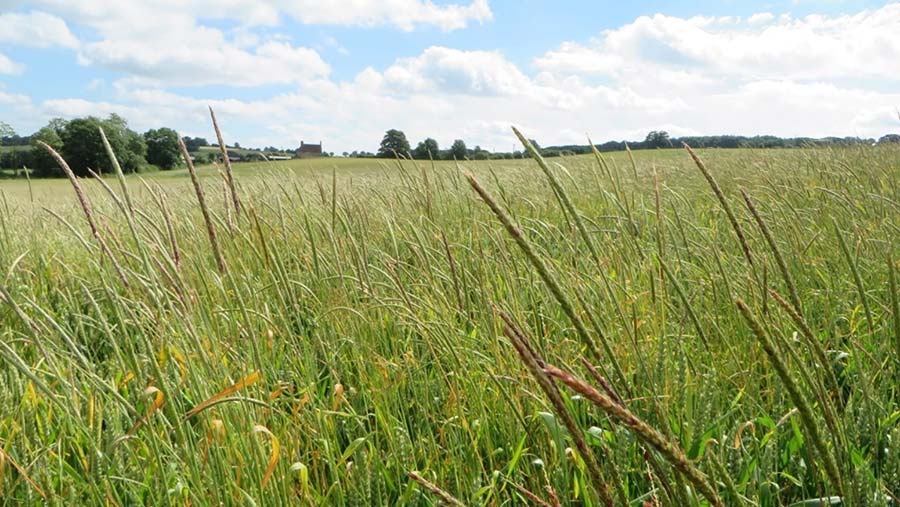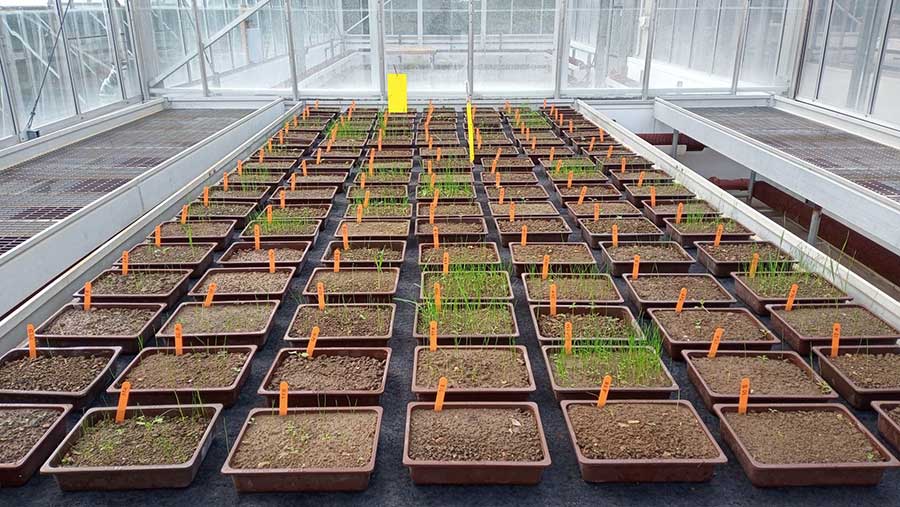Scientists trial eDNA technology to quantify viable blackgrass seeds
 © David Comont/Rothamsted Research
© David Comont/Rothamsted Research A new grassweed research project hopes to quantify the amount of viable blackgrass weed seeds detected in soil samples through the use of environmental DNA technology.
Scientists from Nottingham Trent University are developing a method that will distinguish weed seeds from tiny traces of DNA found in soils, which living organisms release into their environment known as environmental DNA (eDNA).
See also: University project develops robotic blackgrass weeder
The eDNA samples can be collected and analysed to identify and quantify the exact species present.
In this scenario, the amount of blackgrass present in the seed bank can be calculated, providing farmers with the decision-making information to target specific problem areas.
Identifying weed species in soils
In collaboration with Nottingham Trent University, the University of Sheffield and Rothamsted Research, the proof of concept study will initially look at blackgrass, which is estimated to cause a loss of almost 1m tonnes of wheat yield a year in England alone.
If successful, the tool will be further developed to detect herbicide-resistant seeds in the seed bank and extend this to other weed species.

Seed bank germination trials © David Comont/Rothamsted Research
Helen Hicks, lead researcher and environmental scientist at Nottingham Trent University, says that the use of eDNA provides an effective and rapid method to identify weed species in soils.
“Research into seed soil bank dynamics has previously been limited as sampling was based on sieving through soils and counting individual seeds – a very laborious and tedious task,” says Dr Hicks.
The use of eDNA technology and quantitative PCR diagnosis tests will therefore be a crucial breakthrough to determine sustainable weed management options for farmers, equipping them with knowledge of weed seed counts to improve farm decision-making.
Dr Hicks explains that the trial could pave the way for a future soil sampling service which would allow farmers to assess how much weed seed is present in soil samples.
In response to sample analysis, specific threshold levels could then suggest to growers what targeted action could be taken.
Reducing herbicide resistance
“Farmers need a diversity of methods for successful weed control, as weed species can quickly adapt to the methods employed to combat them.
“Developing and testing new approaches to provide farmers with relevant information is key for them to make informed decisions.
“Our tool could enable targeted management of weed populations and reduce reliance on agrichemicals to develop more sustainable food production systems.
“For example, if growers could accurately identify the density of weed seeds, they would not need to spray an entire field, reducing the risk of herbicide resistance and saving money,” Dr Hicks concludes.
What does the trial involve?
The study will involve developing and trialling a process in the lab using two different soil types that contain a range of known quantities of blackgrass weed seeds.
The trial will assess whether the eDNA technology can accurately detect the amount of viable blackgrass seed present, using quantitative PCR test diagnosis.
Both clay and loam soil types sampled from farms with zero blackgrass will be tested, with a low, medium, high and very high level of blackgrass seeds added to each trial pot.
The research team then intend to scale up the project across UK farms and delve into herbicide resistance detection.
Results and findings are expected to be available in the summer.
